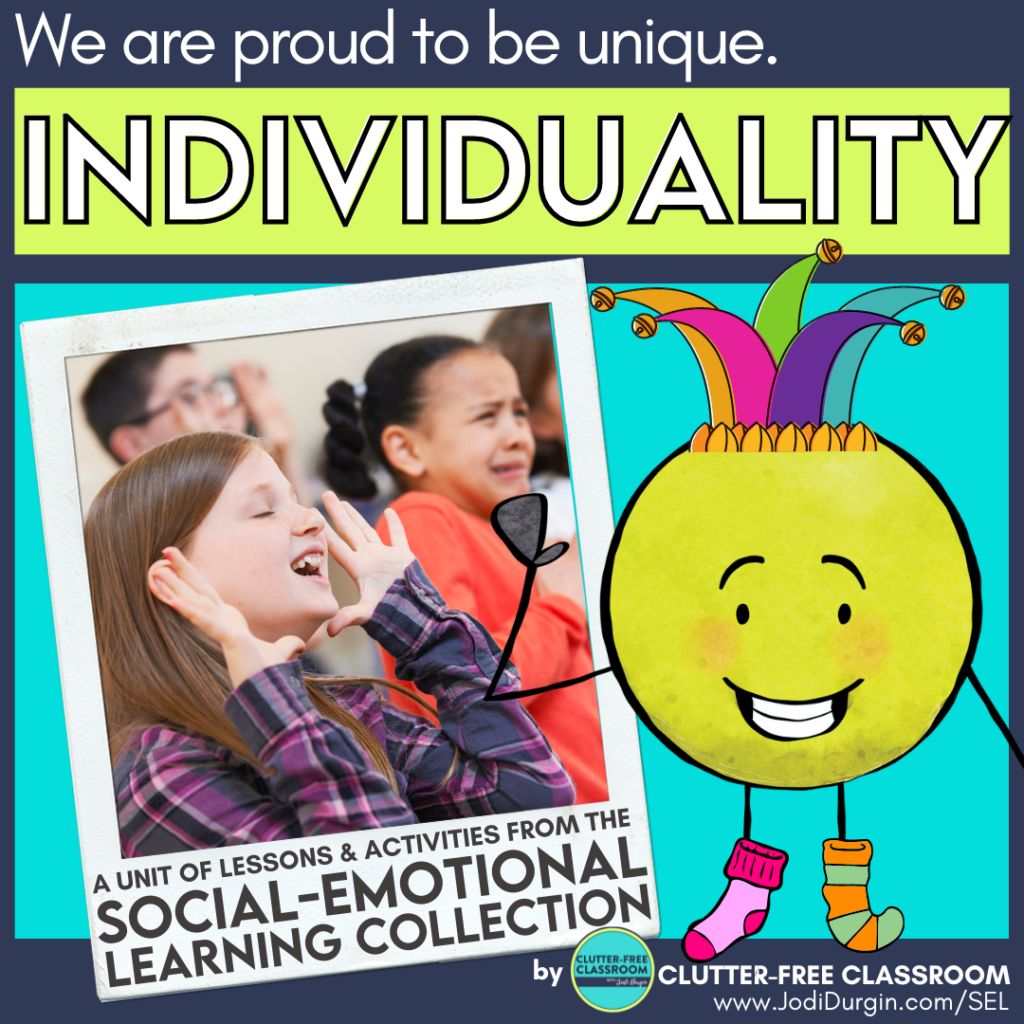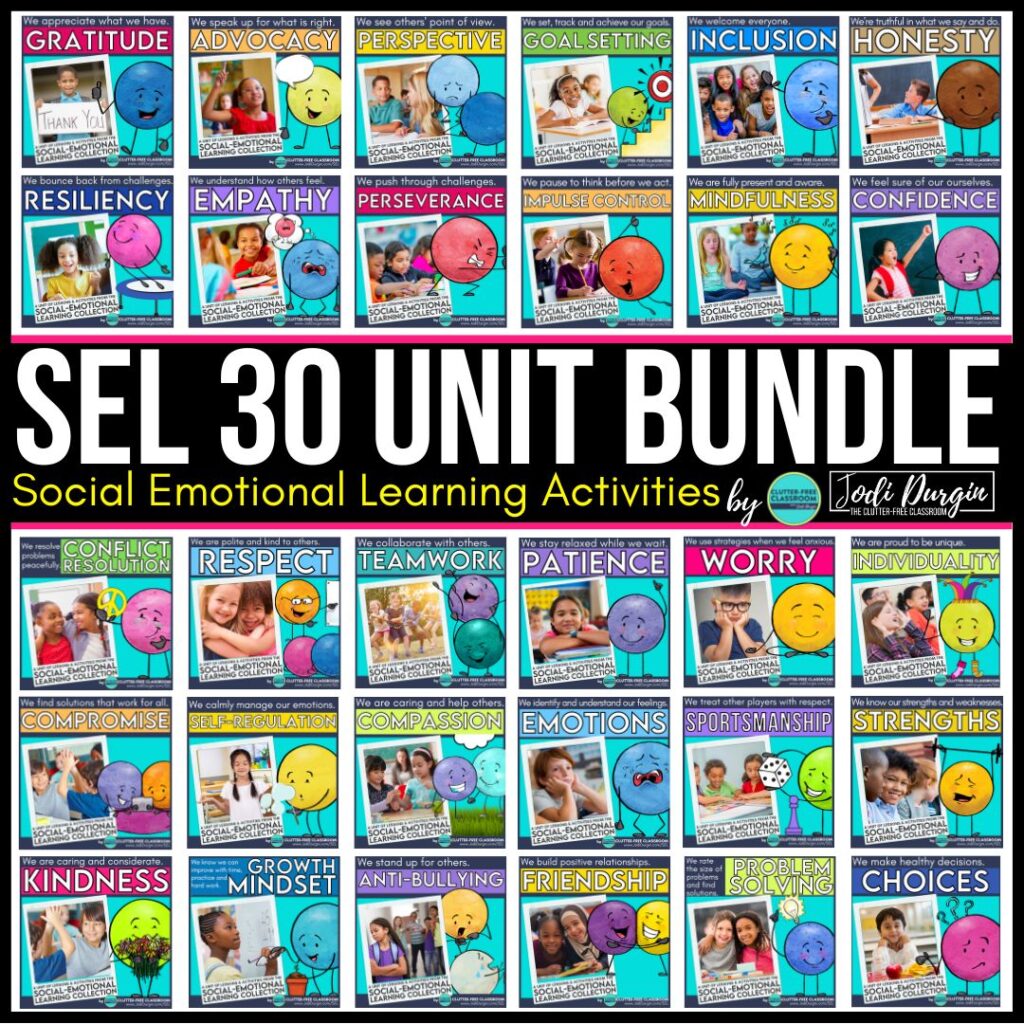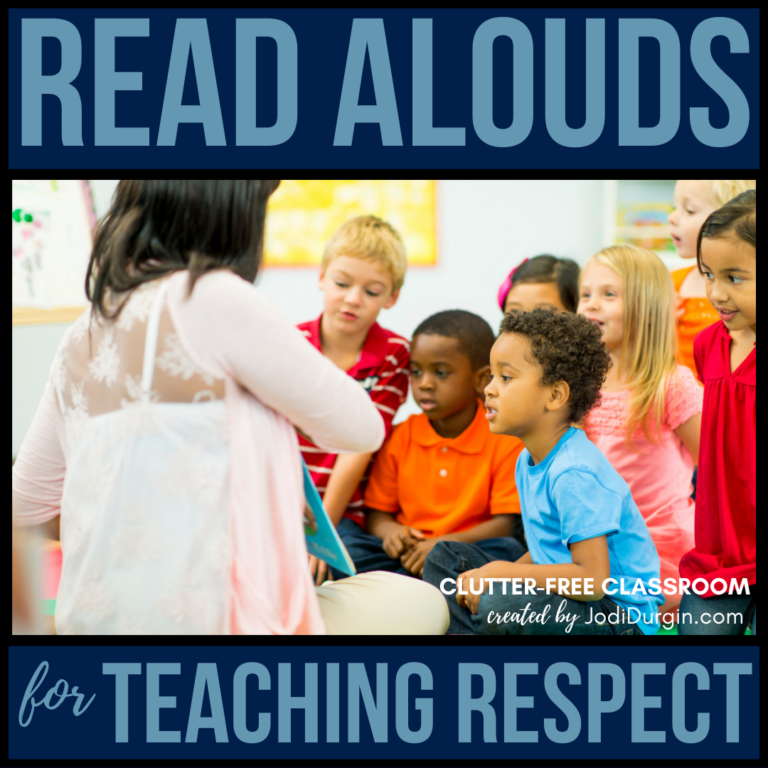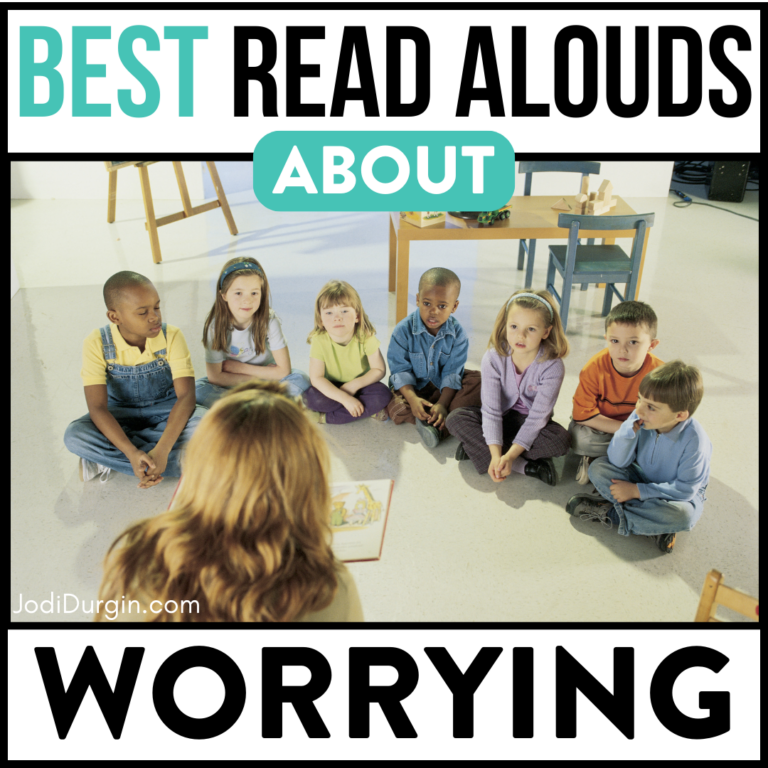If you are an elementary teacher looking to learn how to help your students learn individuality then you found the right place! Individuality prepares kids to recognize their unique qualities and build their confidence. Students who recognize individuality are more confident and reflective than students who cannot. In this post, we’ll go into detail about what individuality is and why it’s important. In addition, we’ll share tips and ideas for teaching individuality in an elementary classroom setting. Read all about helping students recognize their unique qualities in and out of the classroom below!
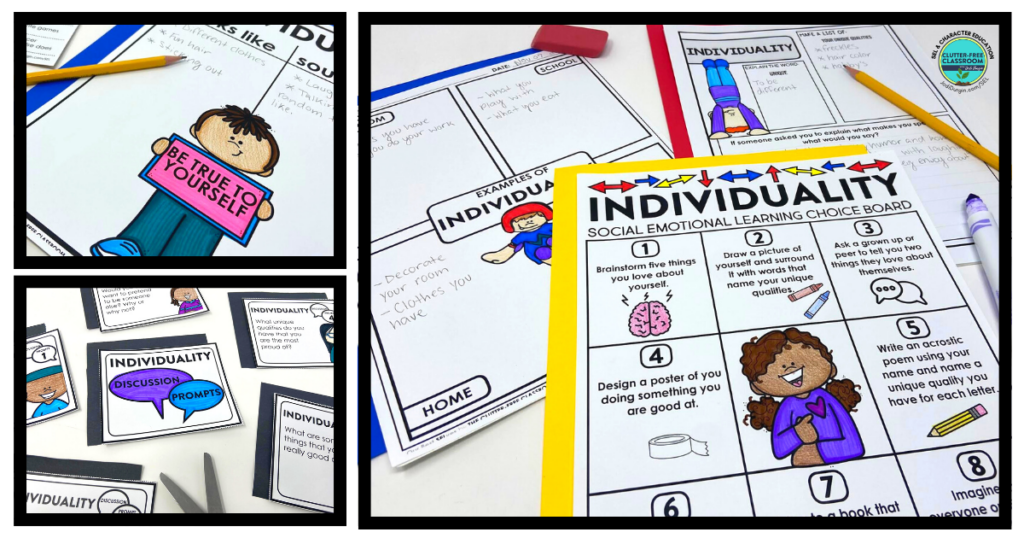
What Does Individuality Mean?
Individuality means recognizing that we all have our own unique qualities and differences and that that should be celebrated. Instead of everyone trying to dress, look, act the same, or have the same interests, it is important to celebrate that we are all unique.
Why is it Important for Kids to Learn Individuality?
It is important for kids to learn individuality because it builds up their confidence. Instead of students wishing that they were more like someone else, they will celebrate the wonderful things that make up who they are.
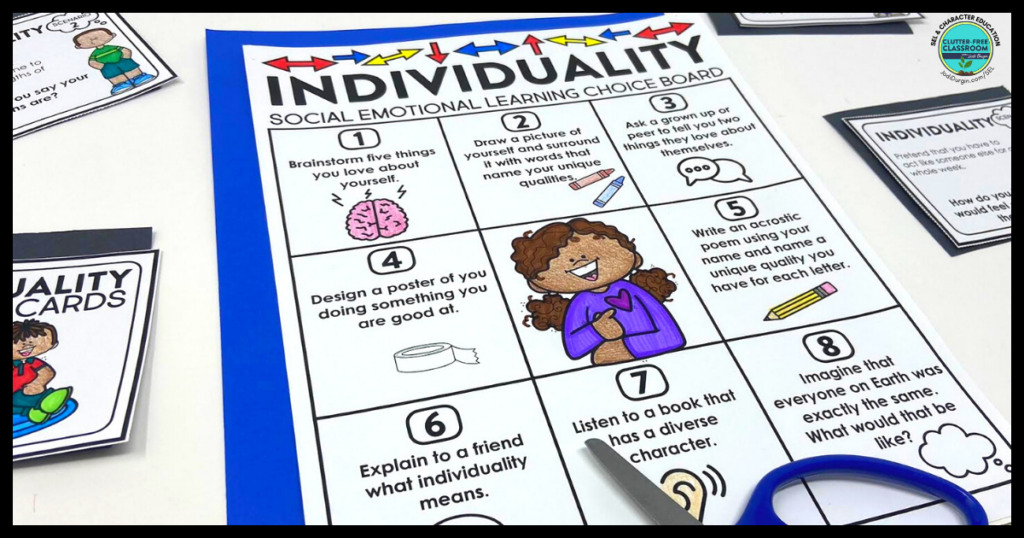
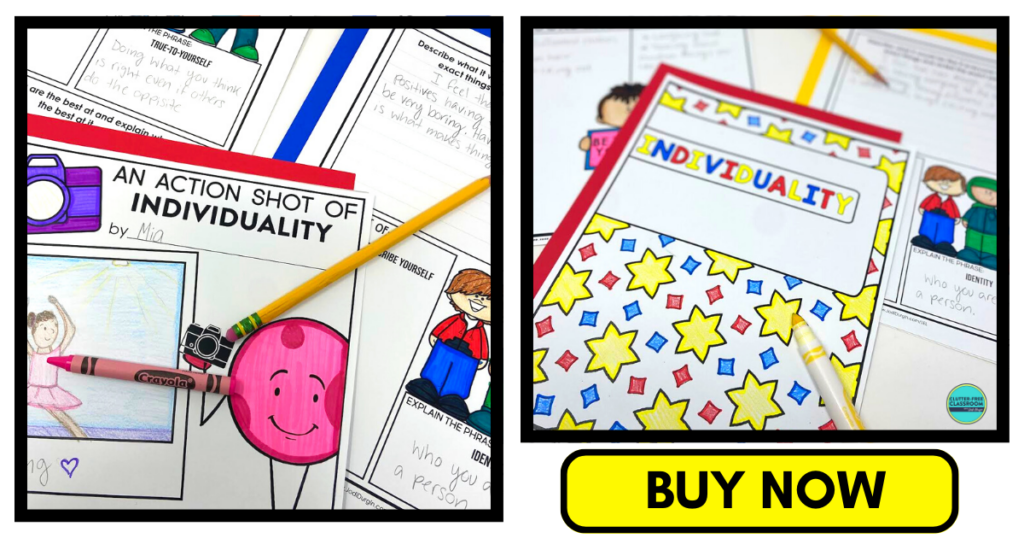
How Do I Know If I Need to Teach Individuality in My Classroom?
The students in your 1st, 2nd, 3rd, 4th or 5th grade classroom would benefit from individuality lessons and activities if any of these statements are true:
- Students constantly want to all do the same thing.
- You notice student self confidence is struggling.
- Students are having a hard time believing in themselves.
- Students make derogatory statements towards themselves.
- They aren’t proud of themselves.

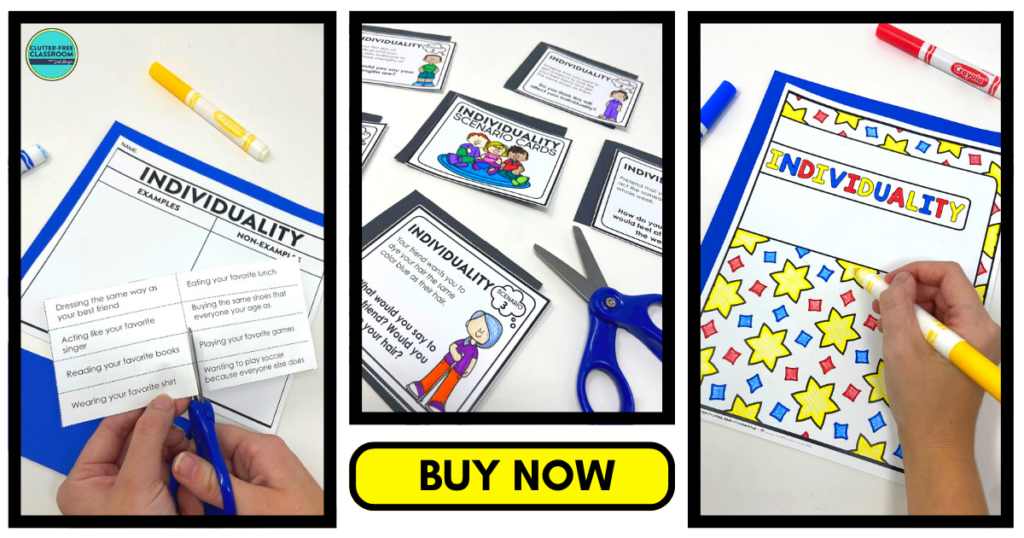
4 Reasons To Promote Individuality In Your Elementary Classroom
Below are 4 reasons to promote individuality in your elementary classroom.
1. Individuality builds confidence
When students recognize their own strengths and the wonderful things who make up who they are, they will believe in themselves more. They will also learn to love what makes them different which builds their confidence up.
2. Individuality causes students to reflect
Focusing on individuality causes students to look inward and reflect on what makes them unique. They will think about their interests, hobbies and goals and celebrate what makes up who they are.
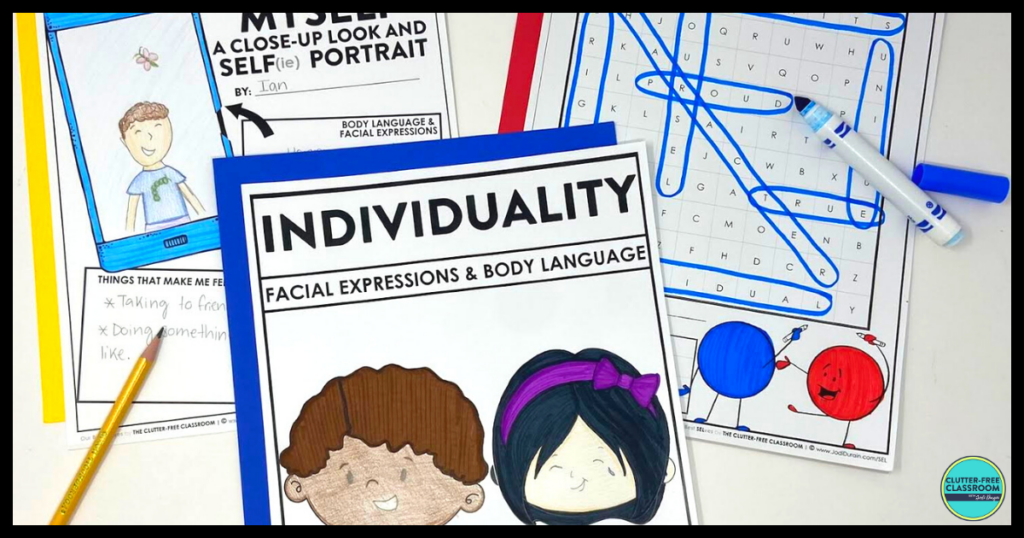
3. Individuality teaches strengths and weaknesses
Practicing individuality also helps kids recognize their strengths and weaknesses. Thinking about what makes you unique naturally lends itself to thinking about your strengths and weaknesses. This can also lend itself to a lesson on using a growth mindset.
4. Individuality fosters a diverse classroom environment
The best thing about teaching individuality is that it creates a classroom environment where differences are celebrated. Individuality teaches diversity and how important it is to include others and represent who you truly are.
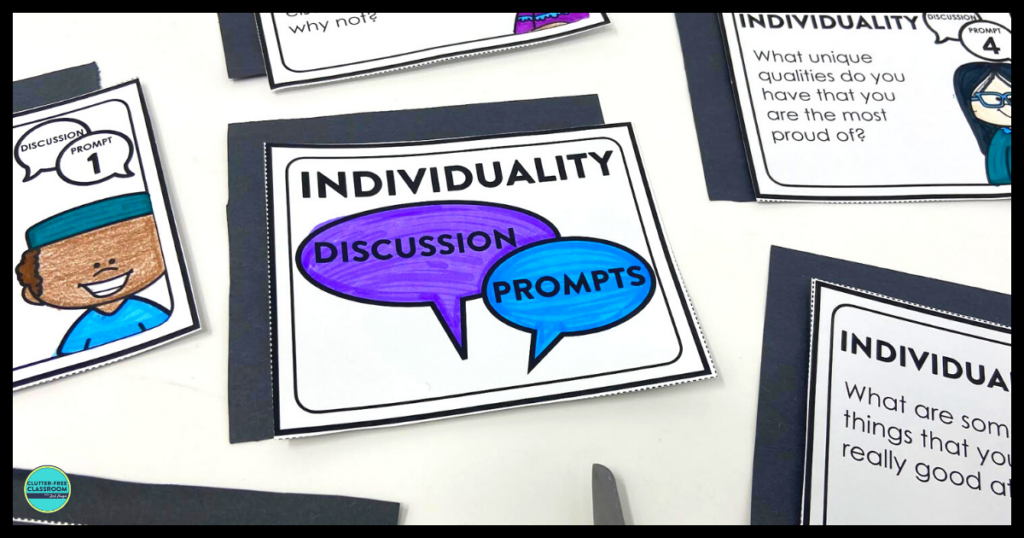
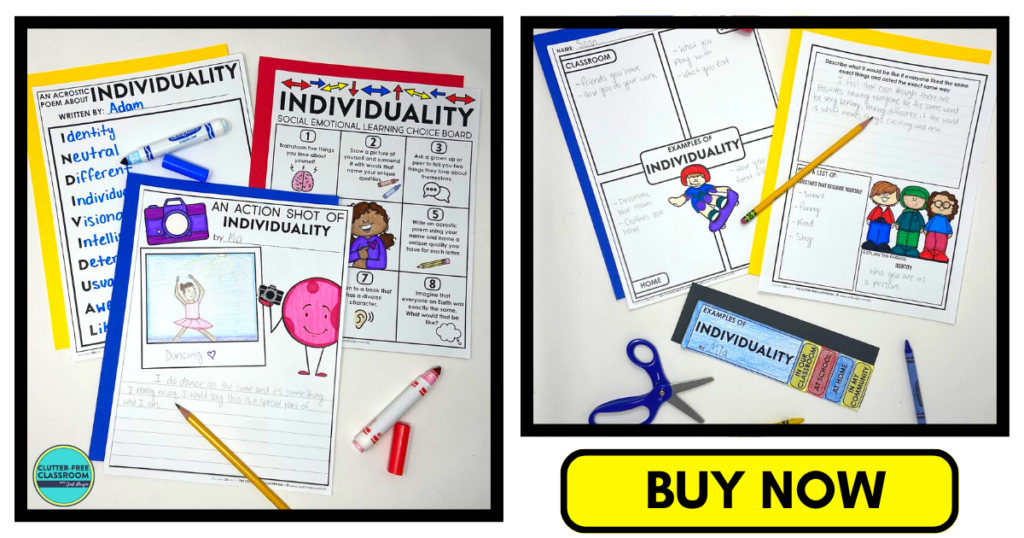
5 Tips and Ideas for Teaching Individuality
Below are tips and ideas for teaching individuality to elementary students.
1. Read Aloud Picture Books about Individuality
Picture books are a great way to introduce and teach an SEL topic. It gets students thinking about the topic and activating their background knowledge. Check out this list of picture books for teaching individuality!
2. Watch Videos about Individuality
There are tons of free online videos out there that promote social emotional learning. It’s a fun and engaging way to teach SEL skills that your students will enjoy. Check out these videos for teaching individuality!
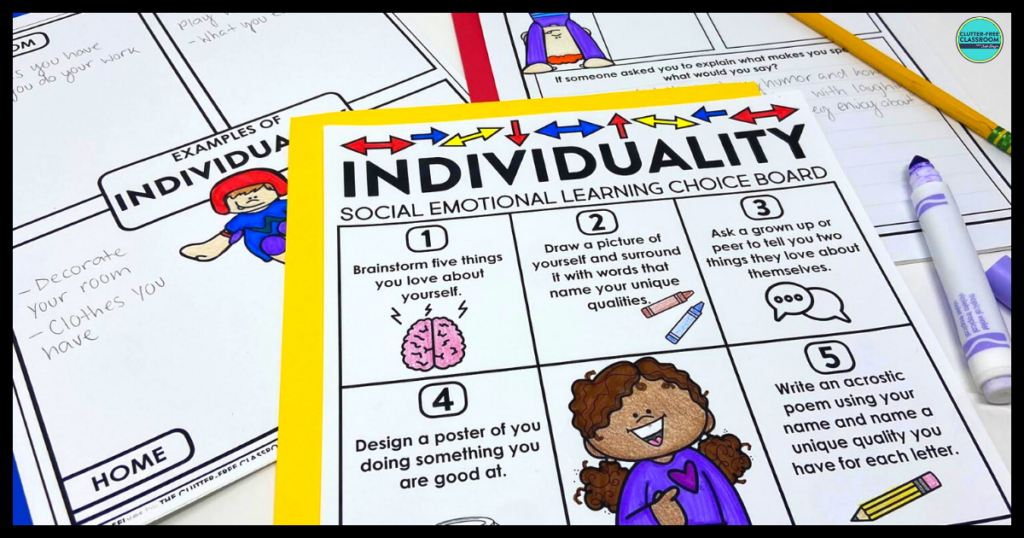
3. Explicitly Teach Vocabulary Related to Individuality
Vocabulary words can help students develop understanding of individuality and create connections through related words. Our individuality SEL unit includes ten vocabulary cards with words related to the SEL topic. It is important for students to be able to see, hear, and use relevant vocabulary while learning. One idea for how to use them is to create an SEL word wall as students learn the words.
4. Provide Practice Opportunities
When learning any skill, students need time to practice. Social emotional learning skills are no different! Our individuality SEL unit includes scenario cards, discussion cards, choice boards, games, and much more. These provide students with opportunities to practice the skills independently, with partners or small groups, or as a whole class.
5. Integrate Other Content Areas
Integrating other content areas with this topic is a great way to approach this SEL topic. Our individuality SEL unit includes reading, writing, and art activities.
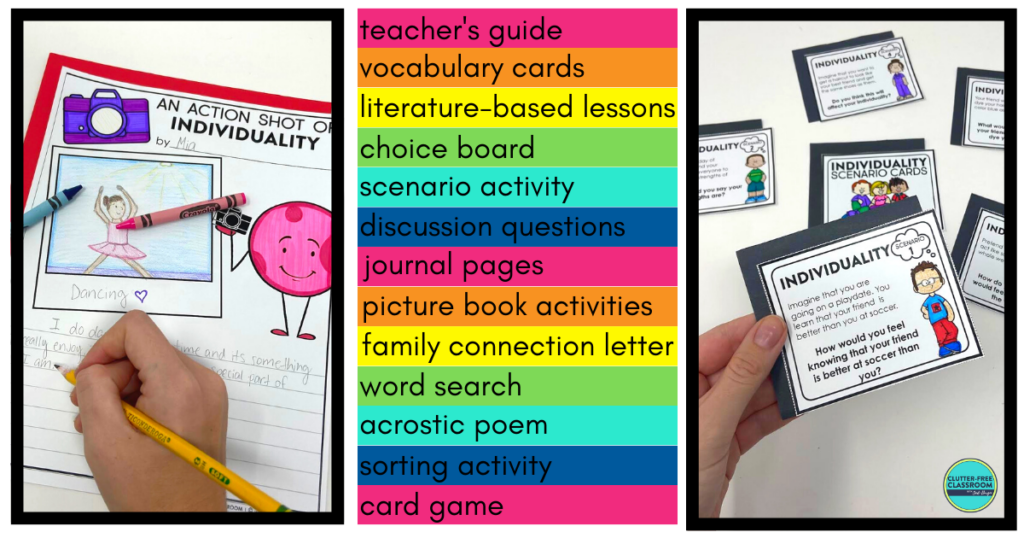
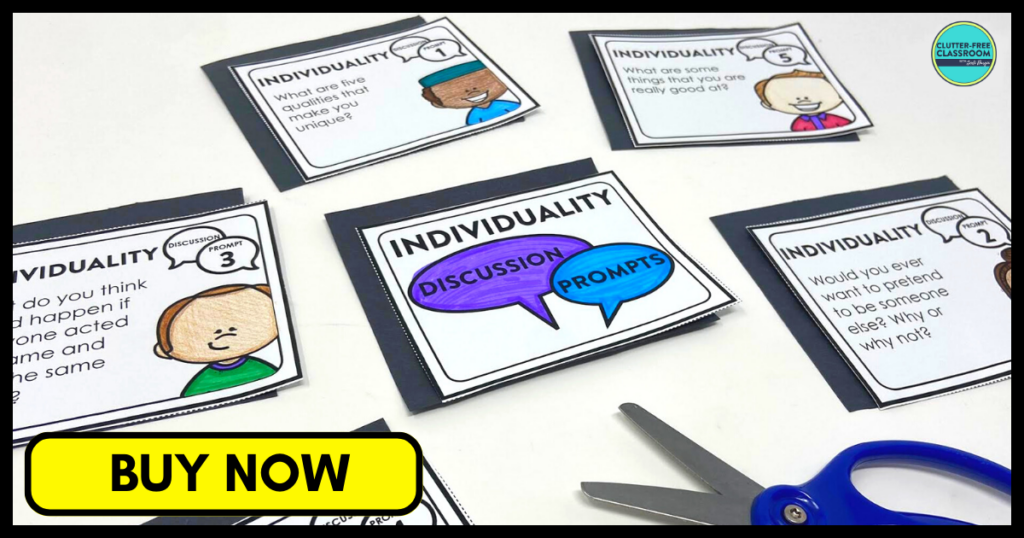
Skills Related to Individuality
Individuality, in the context of social emotional learning (SEL) or character education, refers to the unique characteristics, traits, and qualities that make each person distinct and different from others. While “individuality” is the commonly used term, there are other words and phrases that can convey a similar meaning. These alternative words highlight different aspects of personal uniqueness, self-expression, and embracing one’s distinct qualities. Here are some other words used in the context of individuality:
- Uniqueness: The quality of being one-of-a-kind, distinct, and unlike anyone else.
- Originality: Expressing ideas, thoughts, and actions in a creative and authentic way.
- Self-expression: Communicating one’s thoughts, feelings, and identity through various forms and means.
- Authenticity: Embracing and being true to one’s genuine self, values, and beliefs.
- Personal identity: The unique combination of characteristics, experiences, and qualities that define an individual.
- Selfhood: The essential qualities and characteristics that make up one’s personal identity.
- Autonomy: Asserting one’s independence, self-governance, and ability to make decisions based on personal values.
- Distinctiveness: Having distinguishing features, qualities, or characteristics that set one apart from others.
- Selfhood: The state or quality of being an individual, with one’s own distinct personality and traits.
- Selfhood: The state or quality of being an individual, with one’s own distinct personality and traits.
These terms encompass the concept of individuality and reflect the qualities of uniqueness, self-expression, and embracing one’s distinct qualities within the context of social emotional learning (SEL) or character education.
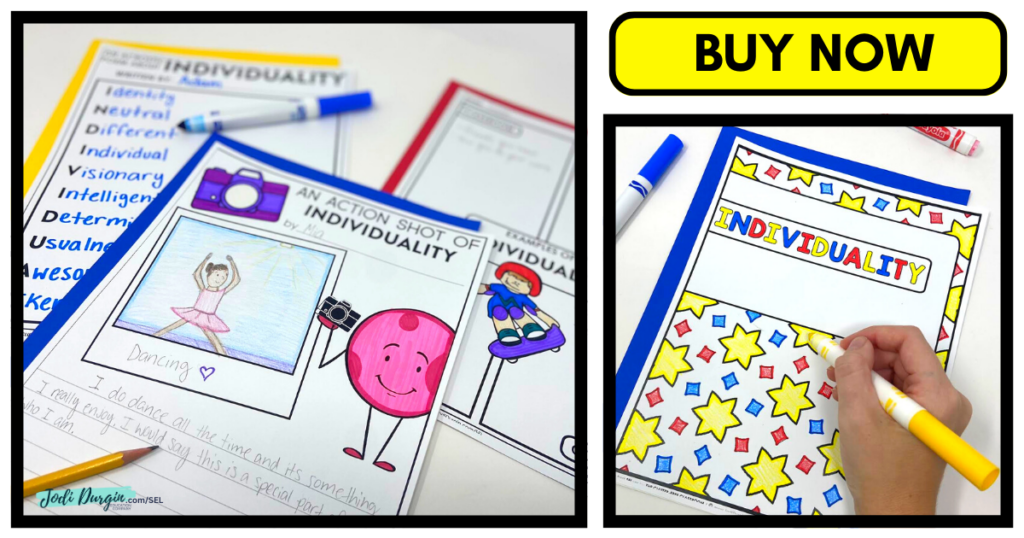
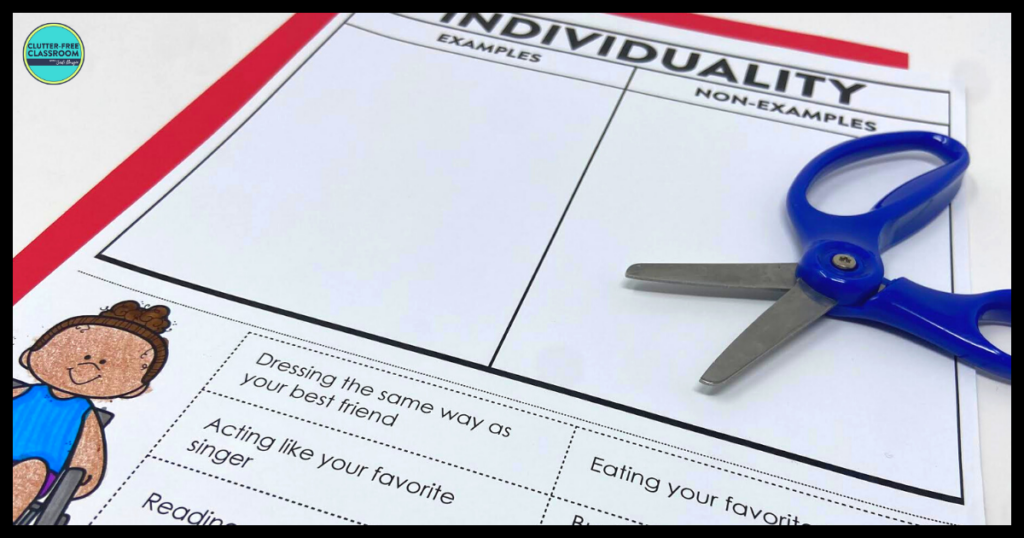
Download the SEL Activities
Click an image below to either get this individual individuality unit or get ALL 30 SEL units!
In closing, we hope you found this information about teaching individuality helpful! If you did, then you may also be interested in these posts.

